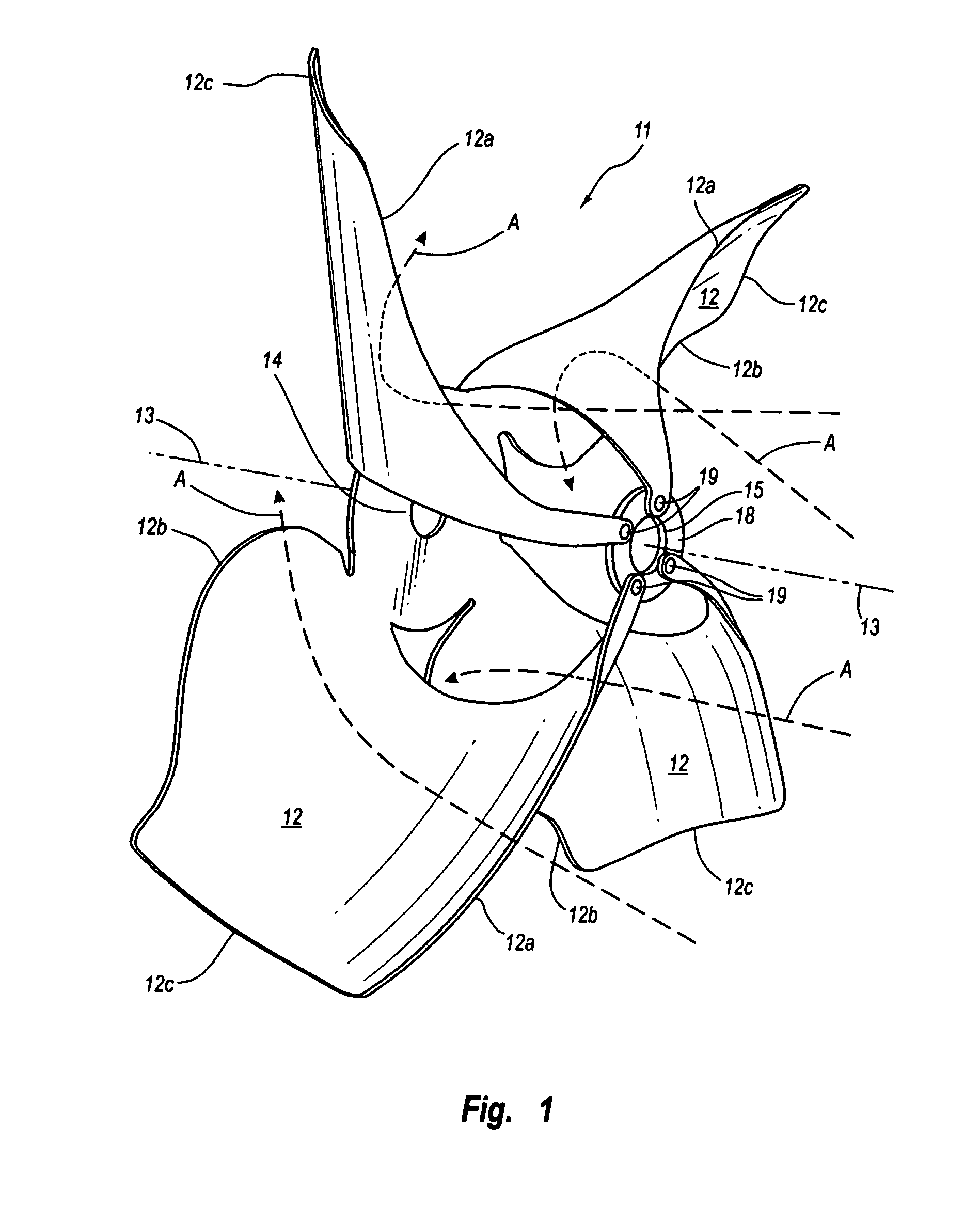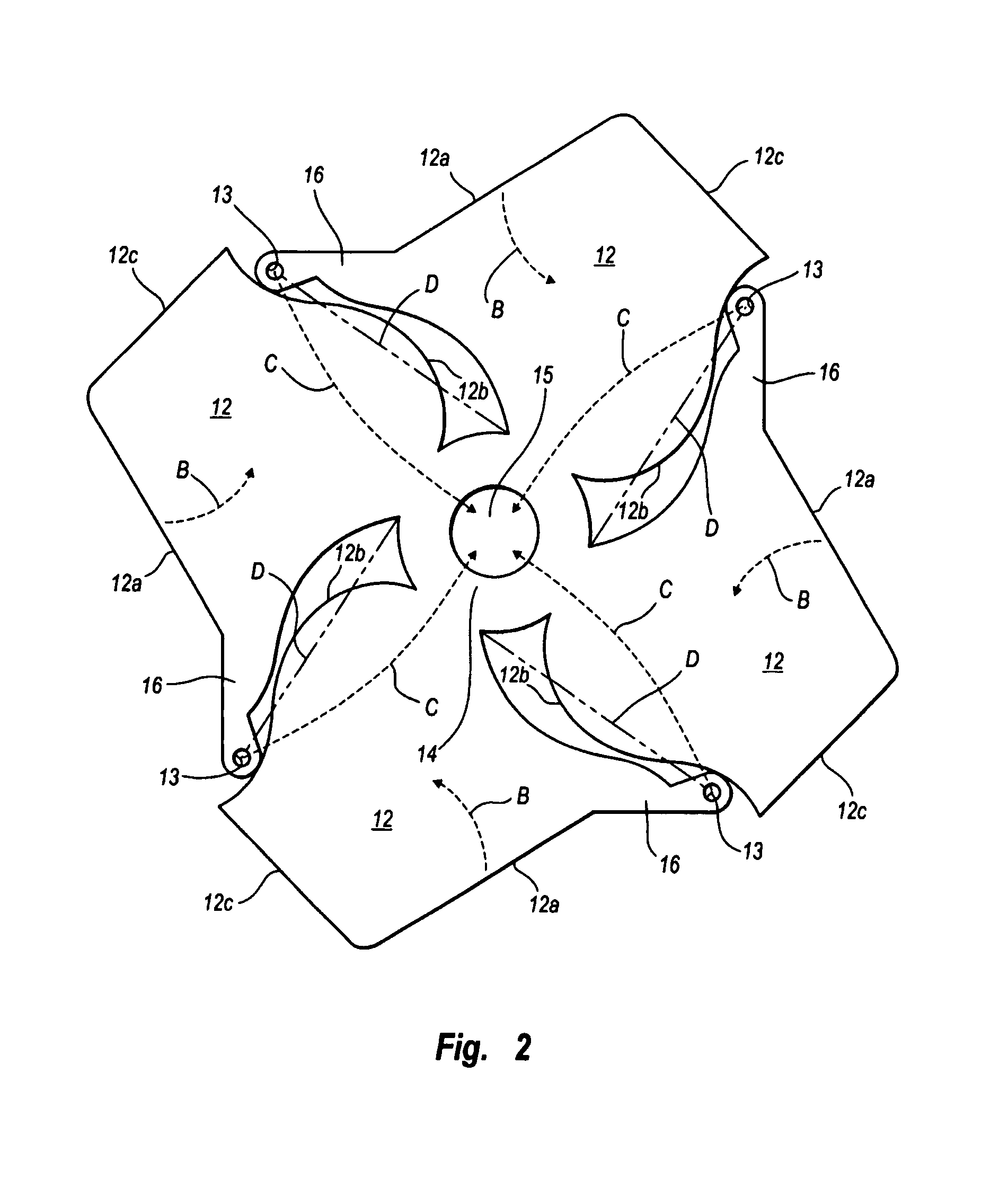Wind sail receptor
a wind sail and receptor technology, applied in the field of wind sail receptors, can solve the problems of lack of efficiency of wind mill blade configuration, heavy blades, and high construction and maintenance costs, and achieve the effects of less maintenance requirements, less and efficient conversion of wind or water flow energy into blade turning
- Summary
- Abstract
- Description
- Claims
- Application Information
AI Technical Summary
Benefits of technology
Problems solved by technology
Method used
Image
Examples
Embodiment Construction
[0026]The invention is in a wind sail receptor for turning, responsive to a flow of air therethrough, for producing usable power. FIG. 1 shows a single four blade section 111 of a wind sail receptor 10, as shown in FIGS. 4 through 6. Though, it should be understood, such single section 11 can consist of three to five blades, within the scope of this disclosure. In FIG. 1 arrows A are included to illustrate the flow of air around a curved portion of each of the identical blades 12, and which curve is illustrated by arrows B in FIG. 2, and is produced by bending each blade 12 between the rear hub 14 and end hole 13 in dog leg 16, shown as broken line D in FIG. 1, The bending to produce a curve or arc that is determined by a ratio of the distance between a rear hub 14 and forward disk 18, shown as broken line E in FIG. 5, referred to as axial distance, to the forward disk 18, forming the blade 12, as shown in FIGS. 1, 3 and 4. Which axial distance from the rear hub 14 to forward disk 1...
PUM
 Login to View More
Login to View More Abstract
Description
Claims
Application Information
 Login to View More
Login to View More - R&D
- Intellectual Property
- Life Sciences
- Materials
- Tech Scout
- Unparalleled Data Quality
- Higher Quality Content
- 60% Fewer Hallucinations
Browse by: Latest US Patents, China's latest patents, Technical Efficacy Thesaurus, Application Domain, Technology Topic, Popular Technical Reports.
© 2025 PatSnap. All rights reserved.Legal|Privacy policy|Modern Slavery Act Transparency Statement|Sitemap|About US| Contact US: help@patsnap.com



